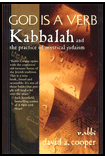
2389 IN KABBALAH, WHAT ARE THE HOLY SPARKS OF THE DIVINE?
Isaac Luria, the 16th century master of Kabbalah, said, "There is no sphere of existence including organic and inorganic nature, that is not full of holy sparks which are mixed in with the kelippot [husks] and need to be separated from them and lifted up."
Imagine that you were an artisan with a fixed amount of liquid gold that was to be poured into a mold to make a perfect work of art. This work of art would cast a magical light that would permeate the world and produce the highest awareness possible in all creation. However, when you pour the gold into the mold, something terrible happens; the mold cracks and many flecks of gold leak out and float away.
The only way the work of art can be completed is to gather all of the missing gold in one place so that the mold can be cast again. As the gold spreads, the flecks themselves split apart until untold numbers of gold atoms are scattered across creation, each one surrounded by a shell of dust that hides it. The gold drifts everywhere and the only way we can get the job done of casting our completed work of art is to employ the help of many others to collect the gold.
The gold in this tale represents the light of divine consciousness, each atom is a spark of holiness. If gathered together into one place--not a physical place, but symbolically the center of the universe--all the sparks combined would radiate ultimate awareness. But when scattered, the sparks drop to denser and denser levels of consciousness, represented by shells or husks (kelippot) that surround them.
The artisan and the lost gold is a simple metaphor to illustrate Isaac Luria's cosmology known as the "Shattering of the Vessels." This cosmology was developed from the opening lines of Genesis that say: And the earth was without form (tohu) and empty (bohu); and darkness was on the face of the deep (tohu-m).
The word tohu means chaos, astonishment,
or confoundedness.
This primordial chaos is viewed by Luria as a situation in which vessels that were supposed to contain the light of creation shattered and the light was thereby concealed in "the deep." The deep is an allusion to death.
The gold was thereby lost.
However, along with chaos there was emptiness (bohu), which implies that there were other vessels ready to receive the light.
Bohu therefore represents the potential of creation, and is called in Kabbalah: the "Universe of Tikkun (Rectification)."
This Universe of Tikkun is a container for the collection of all the missing gold. In kabbalistic language, the gold of our story is called nitzotzot: sparks.
Every particle in our physical universe, every structure and every being is a shell that contains sparks of holiness. Our task, according to Luria, is to release each spark from the shell and raise it up, ultimately to return it to its original state. The way these sparks are raised is through acts of loving kindness, of being in harmony with the universe, and through higher awareness.
The ramifications of this teaching are enormous. In each moment of existence we have the potential to raise holy sparks. If we are unaware of this ability and are spiritually asleep, then we do not accomplish much, for the medium through which sparks are raised is consciousness itself.
Our opportunities to raise sparks are boundless. The choices we make for our activities, the interactions we have with our family, friends, neighbors, business associates, and even strangers, the way we spend our leisure time, the books we read, the television we watch, the way we relate to food, everything in daily life presents sparks locked in husks awaiting release.
(The Ari teaches that there are 288 fallen sparks. This is derived from the next line in Genesis (1:2), "and a wind of God moved over (merachephet) the face of the waters." Merachephet is spelled: mem, resh, peh, het, and tav. The first and last letters--mem tav--spell met (death); the remaining letters--resh, peh, and het--add up to 288. This is also the value of the word ibbur, which means gestation. So, death and rebirth are all represented in the opening to Genesis. It is significant that 288 is four times seventy-two, representing the number of letters in the most hidden name of God (72), repeated once each in the four worlds. See Kaplan, Inner Space, 78-83 for more information on the "Shattering of the Vessels.)